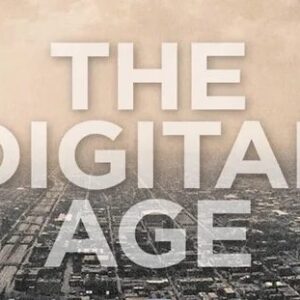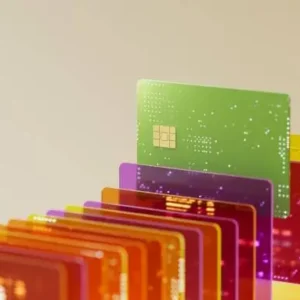
Outline:

1: Introduction
- Opening hook on the digital finance revolution
- Technological shift in personal finance
- Preview of the blog’s insights
2: The Digital Awakening of Personal Finance
- From Ledgers to AI Assistants
- The Rise of Financial Mobile Apps
- The Consumer’s New Expectations
3: Budgeting Apps: The First Phase of Digital Empowerment
- Benefits of Budgeting Apps for the Modern User
- Top Budgeting Apps Transforming Lives
- Mint
- YNAB (You Need a Budget)
- PocketGuard
- Real-Time Budget Tracking and Alerts
4: Automation and AI in Personal Finance Tools
- Predictive Analytics for Spending Habits
- Personalized Financial Advice with AI
- Behavioral Nudges Powered by Algorithms
5: The Birth of Smart Contracts and Blockchain Finance
- What Are Smart Contracts?
- Use Cases in Personal Finance
- How Smart Contracts Increase Trust and Reduce Costs
6: Digital Wallets and the New Currency of Convenience
- Mobile Payment Ecosystems (Apple Pay, Google Pay)
- Crypto Wallets vs Traditional eWallets
- The Global Shift to Contactless Transactions
7: FinTech vs Traditional Banking: Who’s Winning?
- The User Experience War
- How FinTech Offers More for Less
- Regulation and Trust Issues in the FinTech Space
8: The Influence of Data and Privacy Concerns
- Are We Trading Privacy for Convenience?
- How to Choose Secure Finance Apps
- Regulatory Trends (GDPR, CCPA)
9: Changing Consumer Behavior in a Digital Economy
- On-Demand Financial Literacy
- The Rise of Subscription-Based Financial Services
- Users Expect Real-Time Insights
10: Challenges with Tech-Driven Finance Management
- Over-Reliance on Automation
- Cybersecurity Risks
- Lack of Human Intervention in Emergencies
11: The Role of AI-Driven Financial Planning
- Robo-Advisors and Investment Automation
- AI-Powered Retirement Planning Tools
- Machine Learning and Portfolio Rebalancing
12: The Metaverse and the Next Phase of Finance
- Will We Bank in Virtual Worlds?
- NFTs, Tokenization, and Ownership
- Gamified Finance in Virtual Economies
13: How to Embrace the Technological Shift in Personal Finance
- Step 1: Start With a Trusted Budgeting App
- Step 2: Learn About Smart Contracts Through Free Tools
- Step 3: Secure Your Data and Practice Safe Tech Habits
14: The Future Outlook of Financial Technology
- Hyper-Personalized Finance
- DeFi and the Democratization of Money
- The Integration of Finance and Daily Life
15: Conclusion: Embrace the Shift or Be Left Behind
- Recap
- Final Thoughts
- Call to Action
16: FAQs
- What is the biggest benefit of the technological shift in personal finance?
- Are budgeting apps safe for storing personal data?
- How do smart contracts impact everyday users?
- What are the risks of depending on FinTech solutions?
- Is DeFi better than traditional banking?
From Budgeting Apps to Smart Contracts: Unmasking the Bold Shift in Personal Finance and Consumer Habits in Today’s Hyper-Digital Economy
Introduction
The technological shift in personal finance is not just a buzzword—it’s a radical redefinition of how we earn, spend, save, invest, and even trust. If you’ve noticed your banking habits changing—using more apps, less cash, and expecting everything in real-time—you’re part of this sweeping change. In this article, we’ll explore how the technological shift in personal finance is influencing consumer behavior, the rise of smart tools like budgeting apps and smart contracts, and what you can do to thrive in this hyper-digital economy.
The Digital Awakening of Personal Finance
From Ledgers to AI Assistants
A few decades ago, managing money meant tracking figures in paper ledgers. Today, intelligent tools are helping users make smarter decisions with automation, data analytics, and real-time updates. The technological shift in personal finance has replaced pen-and-paper tracking with predictive dashboards and AI-led insights.
The Rise of Financial Mobile Apps
With over 6.92 billion smartphone users globally, mobile finance apps are no longer optional—they’re the new normal. Apps like Mint, YNAB, and Robinhood are reshaping how we interact with our money. Consumers now expect control and visibility from their phones, 24/7.
The Consumer’s New Expectations
We now expect seamless experiences—no queues, no paperwork, no calls. Convenience is the currency. This expectation is fueling innovations across the financial sector and deepening the technological shift in personal finance.
Budgeting Apps: The First Phase of Digital Empowerment
Benefits of Budgeting Apps for the Modern User
Budgeting apps offer real-time financial snapshots, automatic syncing with bank accounts, expense categorization, and personalized financial goals. They remove the guesswork from personal finance.
Top Budgeting Apps Transforming Lives
- Mint – Free, all-in-one budgeting tool that tracks spending, offers bill alerts, and gives credit score updates.
- You Need A Budget (YNAB) – Focuses on zero-based budgeting. Every dollar has a job.
- PocketGuard – Shows how much you can spend safely after bills and goals.
Real-Time Budget Tracking and Alerts
Gone are the days of “end-of-month” surprises. Budgeting apps now send push notifications for overspending, daily summaries, and bill reminders—all part of the seamless technological shift in personal finance.
Automation and AI in Personal Finance Tools
Predictive Analytics for Spending Habits
AI can analyze past behaviors and forecast future spending trends. Tools like Cleo and Albert use machine learning to offer suggestions like, “You’re spending more on dining this week.”
Personalized Financial Advice with AI
Fintech startups like Zeta or Fyle provide advice not based on a financial advisor’s hunch, but on cold, hard data. The more data you provide, the smarter the tool becomes.
Behavioral Nudges Powered by Algorithms
Apps now “nudge” users with tailored reminders like “Save $20 today to meet your vacation goal.” These micro nudges significantly change consumer behavior in the long term.
The Birth of Smart Contracts and Blockchain Finance
What Are Smart Contracts?
Smart contracts are self-executing contracts where the terms are written into code on a blockchain. Once conditions are met, actions are triggered automatically without intermediaries.
Use Cases in Personal Finance
- Auto-paying Rent
- Insurance Payouts
- Freelancer Payments
- Loan Disbursement Schedules
All powered by code, removing delays and the need for middlemen.
How Smart Contracts Increase Trust and Reduce Costs
They eliminate fraud, offer transparency, and drastically cut transaction fees. That’s the essence of the technological shift in personal finance—secure, streamlined, and smart.
Digital Wallets and the New Currency of Convenience
Mobile Payment Ecosystems (Apple Pay, Google Pay)
These platforms are now accepted globally and are replacing physical wallets. Transactions are encrypted, biometric-secured, and instant.
Crypto Wallets vs Traditional eWallets
Crypto wallets like MetaMask and Trust Wallet are gaining traction, offering decentralized alternatives to apps like PayPal or Venmo.
The Global Shift to Contactless Transactions
COVID-19 accelerated this trend. Now, even street vendors use QR codes. NFC, UPI, Tap-to-Pay—terms we couldn’t imagine a decade ago are now part of our everyday vocabulary.
FinTech vs Traditional Banking: Who’s Winning?
The User Experience War
FinTech firms offer slick, minimalist interfaces. Traditional banks? Often slow and clunky. The younger generation prefers the former, demanding speed and functionality.
How FinTech Offers More for Less
FinTech apps offer:
- Lower transaction fees
- Free investment platforms
- No-minimum savings accounts
All of which push traditional banks to innovate or die.
Regulation and Trust Issues in the FinTech Space
However, FinTech still faces scrutiny. Many aren’t insured or regulated like traditional banks. Consumers must tread wisely in this technological shift in personal finance.
The Influence of Data and Privacy Concerns
Are We Trading Privacy for Convenience?
Yes. Every time we use a budgeting app or scan a QR code, we leave a data trail. This data can be sold or breached.
How to Choose Secure Finance Apps
- Look for bank-grade encryption
- Check for two-factor authentication
- Read user reviews
- Prefer apps with transparent privacy policies
Regulatory Trends (GDPR, CCPA)
Governments are catching up. The GDPR in Europe and CCPA in California are strong steps toward giving users control over their data.
Changing Consumer Behavior in a Digital Economy
The technological shift in personal finance has not only transformed tools—it has reshaped the very DNA of consumer behavior. In this hyper-digital age, how we think about money, interact with financial services, and make spending decisions has undergone a seismic change. Let’s break down what’s driving this transformation—and what it means for you.
On-Demand Financial Literacy: Knowledge Is No Longer Power—It’s Currency
In the past, financial knowledge was often confined to textbooks, gated by expensive seminars, or handed down by financial advisors. Today, it’s democratized and on-demand. With a smartphone and an internet connection, anyone can learn:
- How to invest in ETFs (Exchange-Traded Funds)
- How compound interest grows your wealth
- How to build credit, reduce debt, and save for retirement
Platforms like Khan Academy, Investopedia, Coursera, and mobile apps like Bloom and Zogo are gamifying financial education. These tools reward users with real-life incentives for completing bite-sized lessons.
This behavioral shift means consumers are no longer passive about their finances—they’re learning actively and making smarter, faster decisions.
📌 Insight: Google search trends show a 60% increase over the last 3 years in queries like “how to start investing” and “what is a credit score?”—proof that financial curiosity is exploding.
The Rise of Subscription-Based Financial Services: The Netflix-ification of Money
We’ve seen it with entertainment, fitness, and food delivery—but now subscriptions are entering your wallet too.
From budgeting tools and robo-advisors to credit monitoring and tax automation, consumers are willing to pay monthly fees for convenience, speed, and personalization. Some examples:
- Truebill: Tracks and cancels unwanted subscriptions
- YNAB: Offers premium budgeting techniques for a yearly fee
- Rocket Money: Automates financial planning for a monthly price
This marks a major behavioral pivot. Instead of one-time software purchases or free tools, users are choosing ongoing, evolving value-based services—even if it means a few extra dollars a month.
Why? Because time is the new currency.
💡 Lesson: Consumers are not just buying services—they’re buying peace of mind, automation, and time savings.
Users Expect Real-Time Money Management: Waiting Is Not an Option Anymore
One of the most profound shifts in consumer behavior is the demand for real-time financial control.
People don’t want to wait until the end of the month to see how much they spent. They want to know now. That’s why tools like:
- Mint deliver instant budget alerts
- Zeta shows real-time spending for couples
- Cash App provides immediate money transfers and transaction history
This “real-time or nothing” mindset is driving massive adoption of instant banking, AI-driven money tracking, and spending visualization apps.
The digital economy is fast—and today’s consumer is faster.
📊 According to a Statista report, over 54% of Gen Z and Millennials say they are more likely to stick with a finance app that offers real-time notifications and instant balance updates.
Hyper-Personalized Financial Engagement
Consumers today don’t want generic advice—they want financial insights tailored to their unique lifestyle. AI-driven platforms now analyze your:
- Income streams
- Spending categories
- Personal goals
- Credit health
… and deliver customized actions, like:
- “You can save $35 this week by eating out less.”
- “Shift $100 to savings—no upcoming bills are due.”
- “Your emergency fund is behind by $500. Add to it this payday.”
This isn’t financial management—it’s financial co-piloting.
Social Proof & Peer Comparisons Are Driving Financial Choices
Consumers are increasingly making financial decisions based on what their peers are doing. Apps like Cleo and Monzo gamify spending with leaderboard rankings, emojis, and friendly roasting if you overspend.
Why does this work?
Because in a world dominated by digital feedback loops, people want affirmation that they’re doing it “right.” We’re seeing money become social, interactive, and even fun.
🎯 Emotional Hook: The average user is no longer just managing money—they’re building habits, comparing stats, and even competing financially with friends and family.
Mobile-First Behavior: The Finance App is the New Bank Branch
According to a 2024 McKinsey survey, more than 72% of Gen Z have never walked into a traditional bank branch. Instead, they rely on apps like:
- Chime
- Cash App
- Venmo
- Robinhood
- Sofi
This change is more than convenience—it’s a cultural revolution. The technological shift in personal finance has shifted trust from legacy institutions to clean interfaces and real-time access.
🧠 Think about it: If your money isn’t visible in real-time, it may as well not exist in the eyes of today’s digital consumer.
Impulse Spending in the Digital Economy: A Double-Edged Sword
One dark side of digital convenience is how frictionless transactions fuel impulse spending.
- One-click Amazon purchases
- “Buy Now, Pay Later” temptations
- Instant checkout on Instagram ads
Consumers must now fight not only poor financial literacy, but also psychological triggers baked into every swipe and tap.
⚠️ Pro Tip: Use spending limiters and AI-driven alerts to stay grounded. Apps like Qapital and Simple have rules like “Save $5 every time I order Uber Eats”—turning bad habits into savings.
Emotional Intelligence in Finance Is on the Rise
People are becoming more emotionally aware of their financial behavior. More apps now offer mood trackers, emotional spending reports, and journaling tools.
Platforms like Monarch Money and YNAB are focusing on the “why” behind the spend—not just the “how much.”
🔥 Wrap-Up Insight
Consumer behavior in this digital age is data-driven, mobile-first, emotionally aware, and on-demand. We’re living in a time where your financial life is no longer confined to a bank vault—it lives in your pocket, moves at the speed of your swipe, and evolves with your daily decisions.
This isn’t just a shift. It’s a behavioral reprogramming of how we relate to money—and the winners will be those who adapt early, stay informed, and use digital tools wisely.
Challenges with Tech-Driven Finance Management
Over-Reliance on Automation
When machines make all decisions, we risk becoming financially passive. Automation should assist, not replace human judgment.
Cybersecurity Risks
Data breaches and phishing scams are increasing. One wrong click can drain an account.
Lack of Human Intervention in Emergencies
Try resolving a failed transaction on a robo-advisor platform. You’ll likely face bots, not empathy.
The Role of AI-Driven Financial Planning
Robo-Advisors and Investment Automation
Tools like Betterment, Wealthfront, and Schwab Intelligent Portfolios build and manage your investment portfolio using AI.
AI-Powered Retirement Planning Tools
These tools simulate retirement scenarios, factoring inflation, taxes, and life expectancy.
Machine Learning and Portfolio Rebalancing
AI can rebalance your portfolio dynamically, reducing risks and maximizing gains over time.
The Metaverse and the Next Phase of Finance
Will We Bank in Virtual Worlds?
Yes, it’s already happening. Decentraland, The Sandbox, and Roblox have virtual banks, crypto-based economies, and property sales.
NFTs, Tokenization, and Ownership
NFTs are not just collectibles. They’re being used for real estate, stocks, and even music royalties.
Gamified Finance in Virtual Economies
Imagine earning passive income by playing games or buying land in a virtual world. It’s no longer sci-fi—it’s finance 3.0.
How to Embrace the Technological Shift in Personal Finance
Step 1: Start With a Trusted Budgeting App
Begin your digital journey with user-friendly tools like Mint or YNAB to understand your cash flow.
Step 2: Learn About Smart Contracts Through Free Tools
Explore platforms like Ethereum, ConsenSys Academy, and Coursera courses on blockchain finance.
Step 3: Secure Your Data and Practice Safe Tech Habits
Use strong passwords, avoid public Wi-Fi for transactions, and review app permissions regularly.
The Future Outlook of Financial Technology
Hyper-Personalized Finance
Imagine getting a loan offer based on your real-time income and spending habits—not your credit score alone.
DeFi and the Democratization of Money
Decentralized Finance (DeFi) platforms remove banks from the equation, offering peer-to-peer lending, staking, and more.
The Integration of Finance and Daily Life
Finance won’t be an app; it will be an invisible layer in everything—your fridge, car, or even your smart mirror.
READ MORE: Behavioral Finance in the Age of Digital Distraction
Conclusion: Embrace the Shift or Be Left Behind
The technological shift in personal finance is no longer a forecast—it’s our financial reality. Whether you’re using a budgeting app or experimenting with smart contracts, the world of money has moved online, on-chain, and in real-time. The smart consumer is the empowered one. Embrace this change or risk being financially obsolete.
The technological shift in personal finance is no longer a distant trend—it is the current and future language of money. From budgeting apps that give us control at our fingertips, to smart contracts that eliminate middlemen, to AI-driven insights that anticipate our financial needs, the rules of engagement have been rewritten. And they’re being rewritten fast.
This shift isn’t just about tools—it’s about transformation. It’s about shifting power back to the individual. It’s about democratizing access to wealth-building tools, regardless of background, geography, or income. No longer do you need to walk into a bank to manage your money. Today, your financial advisor could be an algorithm, your wallet could be a smartphone, and your next investment might live on a blockchain.
But here’s the hard truth: those who ignore this evolution will be left behind. Inaction is no longer neutral—it’s costly. Every day you delay, you lose visibility, miss smarter decisions, and forgo opportunities that others are already leveraging.
So, what should you do?
👉 Start small—download a budgeting app.
👉 Get curious—learn about smart contracts and decentralized finance.
👉 Take action—secure your financial data, automate your savings, and track your spending.
👉 Stay informed—subscribe to updates from credible sources like Investopedia, CoinDesk, and Finextra.
The world is shifting. Finance is evolving. And you? You have a choice: adapt and lead your financial future—or stay static and watch the world move ahead without you.
In this hyper-digital economy, financial literacy is no longer a luxury—it’s a survival skill. And the best time to start embracing the shift was yesterday. The next best time? Right now.
FAQs
1. What is the biggest benefit of the technological shift in personal finance?
It brings transparency, automation, and accessibility to financial management, saving time and improving decisions.
2. Are budgeting apps safe for storing personal data?
Most reputable ones use bank-grade encryption and two-factor authentication. Always read their privacy policy before use.
3. How do smart contracts impact everyday users?
They automate transactions, reduce costs, and eliminate the need for third parties in agreements like rent, insurance, or loans.
4. What are the risks of depending on FinTech solutions?
Privacy concerns, cybersecurity threats, and over-reliance on automation without human checks.
5. Is DeFi better than traditional banking?
It depends. DeFi offers more autonomy and lower fees but lacks regulation and formal support during disputes.







